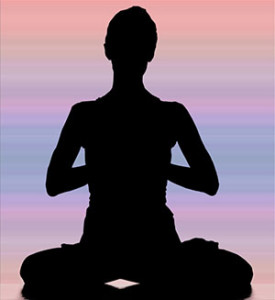
Posture, or how you hold your body, is influenced by many things. Your body is meant to move. Each joint has an optimal range of motion it can perform. And each bone is held in position by many muscles. To enjoy good posture, the muscles must be balanced in strength.
Visualize a muscular tug-of-war… if one muscle overpowers an opposing muscle, an imbalance is created which slowly and incrementally pulls the bones and joints out of “true.” Over time, the skeleton is forced into poor positions that lead to neck pain, shoulder pain, low back pain, etc. The vast majority of neck, shoulder and low back pain derives from muscle imbalances or poor posture.
For example, your spine has a natural curvature which is determined by the balanced strength of hundreds of muscles. A leading cause of low back pain is a very common dysfunction: exaggerated lordosis, aka “swayback” or “Forward Tipped Pelvis.” This may be caused by an imbalance between tight hip flexors and relatively weaker gluteal muscles and/or tight low back muscles and weaker lower abdominal muscles.
Sitting is the most major contributor to Forward Tipped Pelvis dysfunction. Most of us live a sedentary lifestyle. We sit in our cars to drive, we sit at computers, straining our necks to read, we sit to eat, watch TV… you know! The more you sit, the more likely you are to develop this dysfunction.
The good news is that you can reverse the effects of poor posture.
Some of the physiological problems linked to poor posture include:
- Headaches
- Scoliosis
- Kyphosis (hunched back)
- Herniated disc
- Abdominal pain
- Gastroesophageal reflux disease
- Joint degeneration / arthritis
- Muscle tension
- Acid reflux
- Heartburn
- Temporomandibular joint dysfunction (TMJ) — problems related to the chewing muscles and joints.
#1) Sit Correctly
One of the most common causes of poor posture is sitting incorrectly. Allowing your lower back to slump down and curve places additional stress on the vertebrae, which in turn can lead to poor posture.
The right way to sit at a desk or table is to plant your feet about shoulder-width apart, keep your head and neck faced straight ahead, and provide support for your lumbar region. Depending on the type of chair in which you are sitting, you may need to use a special cushion or insert for lumbar support. Without this support, your lower back will slump down and throw off your body’s natural posture.
Sitting properly is especially important during pregnancy. In preparation for childbirth, the body produces a hormone called relaxin, which relaxes the ligaments of the pelvis. As soon as the baby is born, relaxin ceases production, locking the ligaments (and any muscle imbalances) in place.
#2) Acupuncture and TCM
Acupuncture is world-renowned for its ability to reduce pain and stress. It improves energy flow throughout the body so the healing process can occur more effectively. Acupuncture is a painless, drug-free method to reduce pain and inflammation, improve sleep, and calm the mind.
However, Traditional Chinese Medicine involves more than acupuncture. A tongue and pulse analysis will determine what the root causes of your health issues are. Acupuncture points are incorporated to address the impediments to your health.
Enjoy the therapeutic use of essential oils combined with tuina (Traditional Chinese massage). Essential oils synergistically combine to reduce inflammation, relax stressed muscles, relieve body and joint pain, detoxify tissue, release emotions, lift the spirit, and restore calm.
#3) Ask about our Ten-Week Pain Program.
The Pain Program teaches you the steps needed to create permanent positive change. You can significantly improve your posture and reduce or eliminate most kinds of pain in as little as ten weeks!
Learn about:
– proper nutrition as the foundation of all health
– what substances may be causing inflammation in your body
– the importance of hydration
– supplements (if needed) to help your body repair
– corrective stretches to re-balance your muscles and restore posture
– deep belly breathing techniques for stress and pain
– strength and flexibility


